At 92 years old, Mr. Nguyen Quang Tuan in Loi Chap village, Vinh Hoa commune (Vinh Loc) spent 2 years in the army participating in the Dien Bien Phu campaign, but spent his whole life thinking about the sacrifices of his comrades, so that he could have better days of life.

Veteran Nguyen Quang Tuan.
Enlisting in the army in January 1952 at the age of 20, Mr. Nguyen Quang Tuan had a memorable journey. The old soldier recalled his journey to Dien Bien: “Overcoming long roads, dense forests, deep streams, high passes, it took us nearly a month to reach the Northwest. At the military camp, we soldiers considered the forest our home, the trees and grass our friends. Day and night, we sang and played flutes, making the mountains and forests vibrate. The happiest thing was that the Northwest people waited for us like children who had gone far away and were now returning to their mothers.”
Then he continued: “My generation was 20 years old and innocent. After settling down, the fierce journey began again, the sound of hoes and shovels clashing day and night with rocks and soil. All around were forests, mountains, and trees. The enemy searched day and night, dropped bombs, burned down the entire forest, and collapsed the entire road. Wherever they destroyed, our troops repaired the road. There were sections of deep streams and high passes where we cleared the forest, exploited and transported hundreds of thousands of cubic meters of wood to build pontoon bridges, and filled in the swamps so our vehicles could rush day and night to the front line.
During the hard and tiring days of road construction and artillery pulling, the brothers took advantage of their breaks to improve their lives by digging for cassava, picking water spinach, and collecting star fruit to cook sour soup in the forest. More interestingly, they organized cultural exchanges, wrote wall newspapers, and competed in newspaper and poster competitions between units, making the atmosphere even more joyful and bustling. One time, they were laughing their heads off, and while they were singing happily, the radio on the enemy plane bragged, "Division 312 has been destroyed."
As a soldier in Company 20, Battalion 16, Regiment 141, Division 312, he clearly remembers: At that time, units competed to organize sneak attacks and sniping. Tall trees were observation posts, bushes were hiding places to capture the enemy alive, anyone who showed their face would be shot immediately.
"The siege became tighter and tighter, the enemy became more panicked. They increased their troops and weapons for the bases. Enemy planes bombed more fiercely, many sections of the road collapsed, they tried hundreds of tricks to block our army's advance. They attacked one way, we went another, the pulse of the road was still rhythmic until March 13, 1954, the opening battle began. Him Lam post was destroyed, the following night, Doc Lap post was leveled. The soldiers of Ban Keo post were frightened and scattered to surrender.
"As long as I'm alive, I still remember those days," Mr. Tuan said emotionally.
When I asked him what he remembered most, he just said: "Pulling the cannons. Now you hear the girls singing and it's so exciting, but back then it was different for us."

Mr. Nguyen Quang Tuan with relics from Dien Bien Phu period.
He recounted: "Early in the morning of January 15, 1954, more than 5,000 people were spread out across the forest edges and mountain slopes, in some places only 4km from the enemy, within range of their cannons. Thousands of arms were raised, rocks and stones were flying, big trees were uprooted. Enemy artillery occasionally fired randomly. It was the middle of winter, but our clothes were drenched in sweat. We ate right there, and after eating, we immediately got to work. The road gradually appeared, not thanks to miracles but thanks to the determination and extraordinary labor of our troops. Just a few days later, the 15km long, 3m wide artillery road was completed. The whole road had more than a dozen steep slopes, some as steep as 40 degrees Celsius, and deep abysses on the side of the road. As the road was built, the soldiers twisted tree branches and set up trellises to plant trees to camouflage it."
Division 312 made up the majority of the artillery pulling force. The artillery pieces weighing over two tons began to be cut off from the vehicles and pulled by hand from km 70 of Tuan Giao road. To increase the pulling speed and ensure the scheduled date, the comrades met to discuss and draw experience, and many enthusiastic opinions were contributed: "Request the engineers to widen the detour, reduce the slope, use sturdy winch equipment, use jungle ropes for pulling, and arrange the pulling ropes more reasonably... The sounds of "do... ta, hai... ba" rang out. Many of my comrades were ready to let the artillery roll over their feet to get the artillery into position in time to fire. Just thinking about it made me cry."
Seven days and nights passed, thousands of soldiers overcame difficulties, performed the feat of secretly bringing the artillery to the safe position. They thought that they had completed the mission, only waiting for the order to fire, but immediately received the order from their superiors to "pull the artillery out" to carry out the motto "fight firmly, advance firmly". The artillery pieces were also discreetly camouflaged, to be brought to a safe position, ensuring that the opening firing day of the campaign was on schedule.
After 1954, Mr. Nguyen Quang Tuan went to China to study pedagogy. He taught in Hanoi , then in Nghe An, and since 1960 returned to Thanh Hoa. He was a famous literature teacher in Vinh Loc. When mentioning Mr. Tuan, all generations of students of Vinh Hoa Secondary School (Vinh Loc) remember him. Because after class, he would look for documents and write down in notebooks about the resistance war against the French and the Dien Bien Phu campaign. Because after teaching sessions, in the historic days of May, he still went to tell stories about Dien Bien at schools in Vinh Loc district.
Carrying war wounds, he is now a third-class disabled veteran.
Flipping through the iron box, he showed us his Second Lieutenant rank and said: “70 years have passed, I have kept every single piece of paper. Among them is the certificate from the Ministry of War Invalids signed on August 3, 1956 about me being awarded the Dien Bien Phu Soldier Badge by President Ho Chi Minh for directly participating in the Dien Bien Phu campaign in 1954. And also the certificate of wearing the Second Class Victory Medal signed by the Ministry of National Defense on March 6, 1958."
"The last time I went to Dien Bien was in 2014. I was one of nine outstanding anti-French veterans organized by the Provincial Veterans Association. The youngest person in the group was born in 1935, the oldest in 1927. In the blink of an eye, 10 years have passed, and most of them have passed away," said Mr. Tuan.
At 92 years old, his health was poor, and he could barely see in one eye. But just by holding the photo up and looking at it, he could tell us why he had that photo, why he was standing in that position.
The more he turned each page or badge, the more tears fell from Mr. Tuan’s eyes. “I am luckier than many of my comrades, because not only did I survive and return, but I am also alive today, after 70 years of Dien Bien Phu history.”

On the occasion of the 70th anniversary of Dien Bien Phu victory, Colonel Le Van Dien, Commander of the Provincial Military Command, visited Dien Bien soldier - wounded soldier Nguyen Quang Tuan.
His military baggage, besides his uniform, was the following verses: “Dien Bien soldier, comrade/ Please live forever in this world/ To hear you tell the thousand-century/ The resounding heroic song of the land and the people” . Directly fighting and witnessing the sacrifices of his comrades, he was more deeply imbued, more deeply engraved and understood the “resounding heroic song of the land and the people”.
KIEU HUYEN
Source



![[Photo] Prime Minister Pham Minh Chinh chairs the Government's online conference with localities](https://vphoto.vietnam.vn/thumb/1200x675/vietnam/resource/IMAGE/2025/10/5/264793cfb4404c63a701d235ff43e1bd)

![[Photo] Prime Minister Pham Minh Chinh launched a peak emulation campaign to achieve achievements in celebration of the 14th National Party Congress](https://vphoto.vietnam.vn/thumb/1200x675/vietnam/resource/IMAGE/2025/10/5/8869ec5cdbc740f58fbf2ae73f065076)


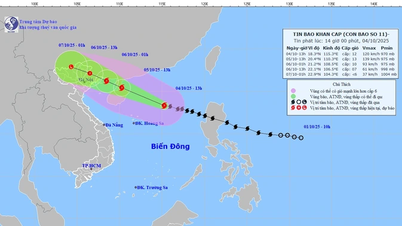

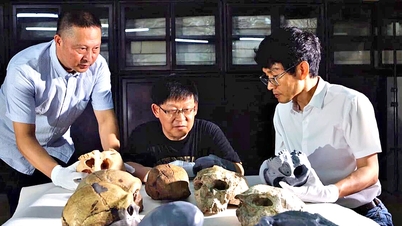





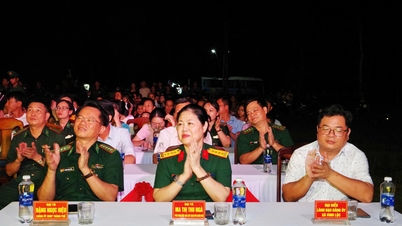


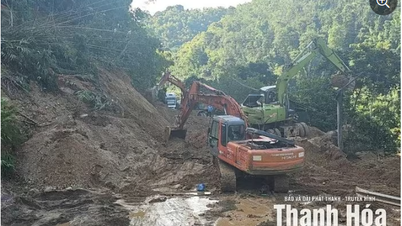

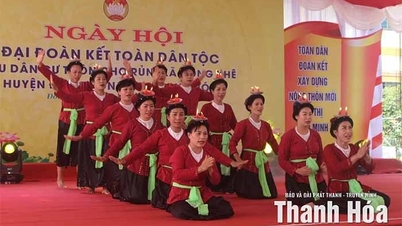

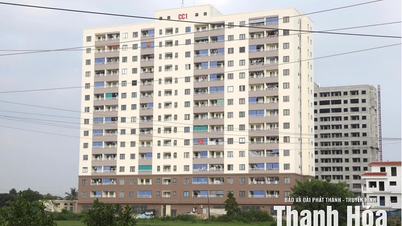
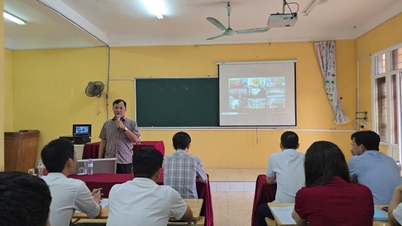
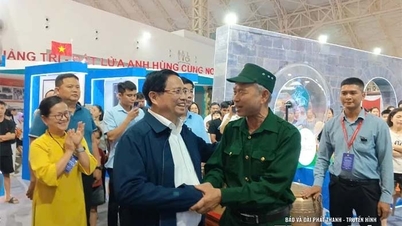
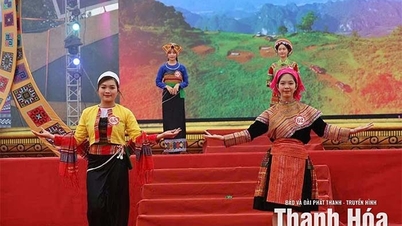




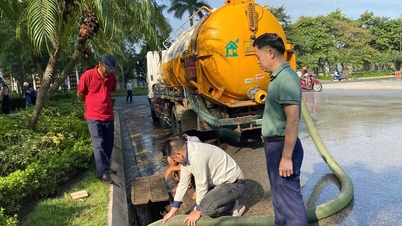
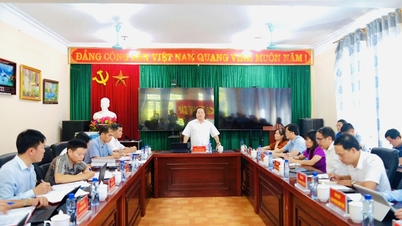


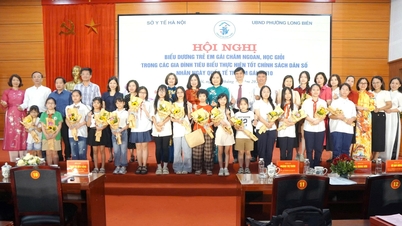
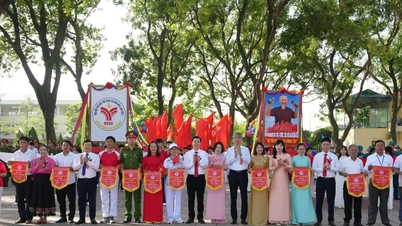
























![[VIDEO] Summary of Petrovietnam's 50th Anniversary Ceremony](https://vphoto.vietnam.vn/thumb/402x226/vietnam/resource/IMAGE/2025/10/4/abe133bdb8114793a16d4fe3e5bd0f12)

![[VIDEO] GENERAL SECRETARY TO LAM AWARDS PETROVIETNAM 8 GOLDEN WORDS: "PIONEER - EXCELLENT - SUSTAINABLE - GLOBAL"](https://vphoto.vietnam.vn/thumb/402x226/vietnam/resource/IMAGE/2025/7/23/c2fdb48863e846cfa9fb8e6ea9cf44e7)















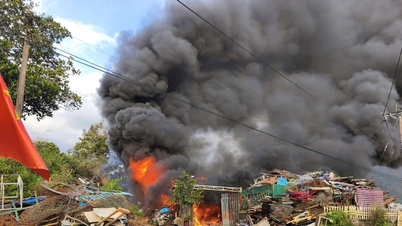

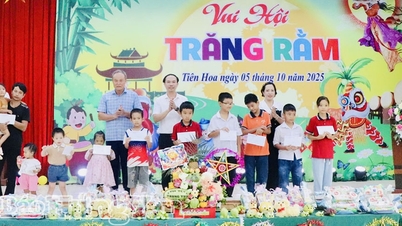

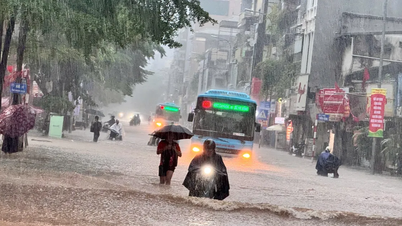
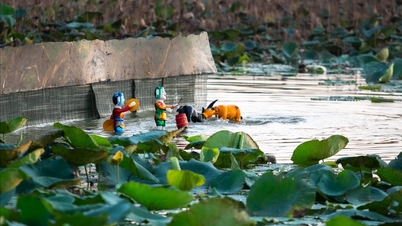














Comment (0)